
Posts Tagged: will allen
Potato Bug Lovers, Unite! A 'Vienna Sausage' T-Shirt!
It had to happen. With so many folks asking "What are those weird bugs?" and UC Davis distinguished professor Lynn Kimsey, director of the Bohart Museum of Entomology, describing them as "basically Vienna sausages with bitey jaws," it definitely had to happen--a Bohart t-shirt...
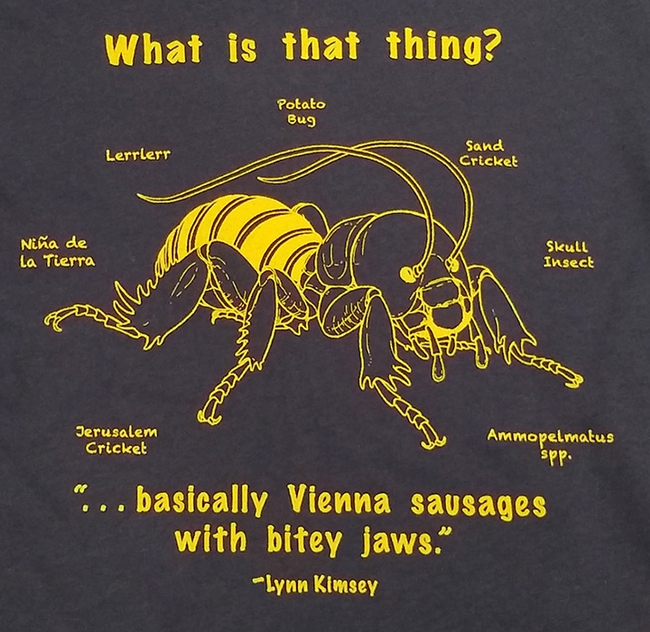
This is the Jerusalem cricket t-shirt by artist Allen Chew, a UC Davis student and Bohart volunteer, and designer Fran Keller, professor at Folsom Lake College. Keller, a Bohart Museum scientist, is a UC Davis doctoral alumnus.
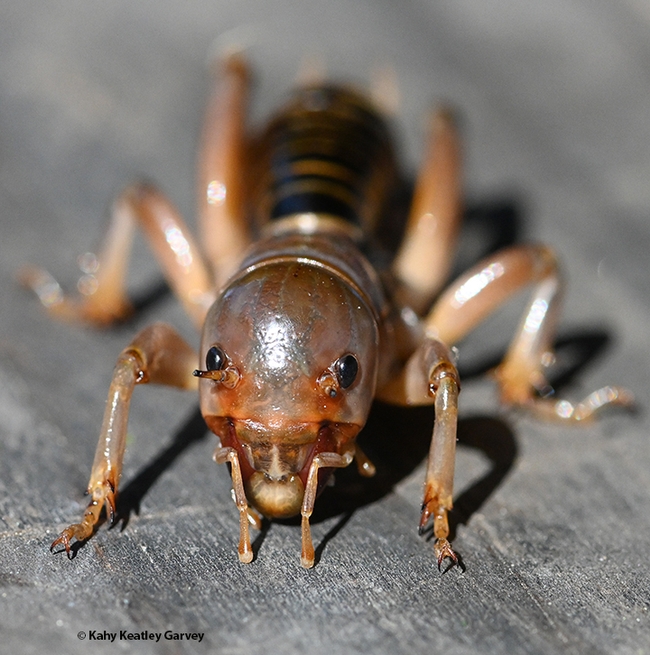
This Jerusalem cricket, aka potato bug, surfaced in April at the Doran Beach campground, Bodega Bay. (Photo by Kathy Keatley Garvey)
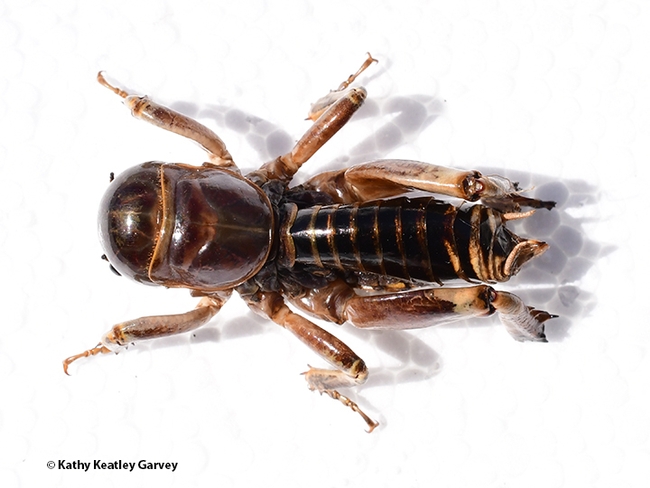
A dorsal view of the Jerusalem cricket, aka potato bug, spotted in April at the Doran Beach campground, Bodega Bay. (Photo by Kathy Keatley Garvey)
UC Berkeley honors Allen-Diaz

“I am incredibly honored to receive this special award,” said Allen-Diaz, who was visibly surprised and moved by Gilless's announcement.
The Berkeley Citation recognizes academic achievement and University service of the highest order. In addition to her contributions as a researcher, graduate student mentor and professor of range science, Allen-Diaz has served in many leadership roles for UC Berkeley and UC Agriculture and Natural Resources (ANR).
“Her leadership as chair of the Department of Environmental Science, Policy, and Management, as Executive Associate Dean of the College of Natural Resources, and finally as the Vice President for Agriculture and Natural Resources has produced a legacy of accomplishments that few academics can match,” Gilless said. “The college would not have its remarkable Geospatial Innovation Facility without her foresight and willingness to make the necessary investment. ANR would not have the strategic plan that has guided a resurgent sense of how to implement the University's land grant mission.”
Allen-Diaz has served as a member of the Intergovernmental Panel on Climate Change, the National Academy of Sciences and the Association of Public and Land Grant Universities. She has authored more than 170 research articles and presentations. In February, she became the first woman to receive the Society for Range Management's highest award, the Frederick G. Renner Award.
After earning her bachelor's, master's and doctoral degrees at UC Berkeley, Allen-Diaz took a job with the U.S. Forest Service. In 1986, she joined the faculty at UC Berkeley faculty, where she studied the effects of livestock grazing on natural resources, oak woodlands and ecosystems of the Sierra Nevada and the effects of climate change on rangeland species and landscapes. At the end of June, she will retire as UC vice president and as Russell Rustici Chair in Rangeland in the Department of Environmental Science, Policy and Management at UC Berkeley.
The Berkeley Citation was created in 1968, when the University of California celebrated its 100th birthday, to honor individuals or organizations that had rendered distinguished or extraordinary service to the university.
To read more about Allen-Diaz's career, see the latest issue of California Agriculture journal.
Cousins, McNicol named UC Sustainability Fellows
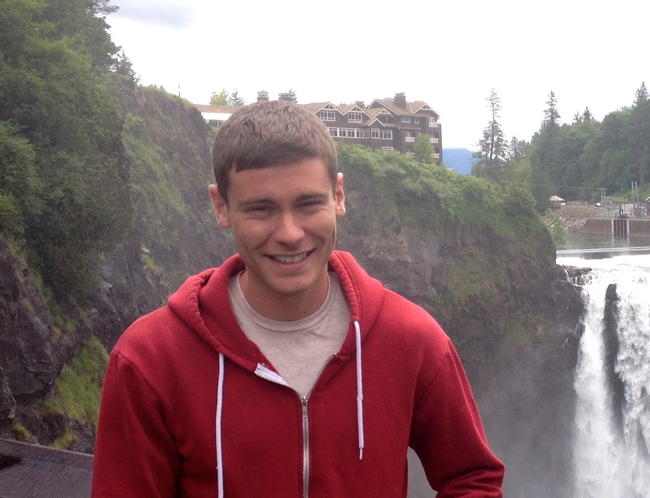
UC ANR has chosen Gavin McNicol and Stella Cousins, both UC Berkeley Ph.D. candidates, to receive UC President's Sustainability Student Fellowships.
“Our search for new ways to reduce UC's and California's carbon footprint is sure to benefit from the creativity and innovative ideas brought by these two exceptional student fellows,” said Barbara Allen-Diaz, UC vice president for Agriculture and Natural Resources.
McNicol, a native of Scotland, is studying how much methane is released from restored wetlands in the Sacramento Delta region. The results of his research will inform the development of future wetland restoration plans, encouraging more effective efforts to minimize emissions of methane, a greenhouse gas that contributes to climate change.
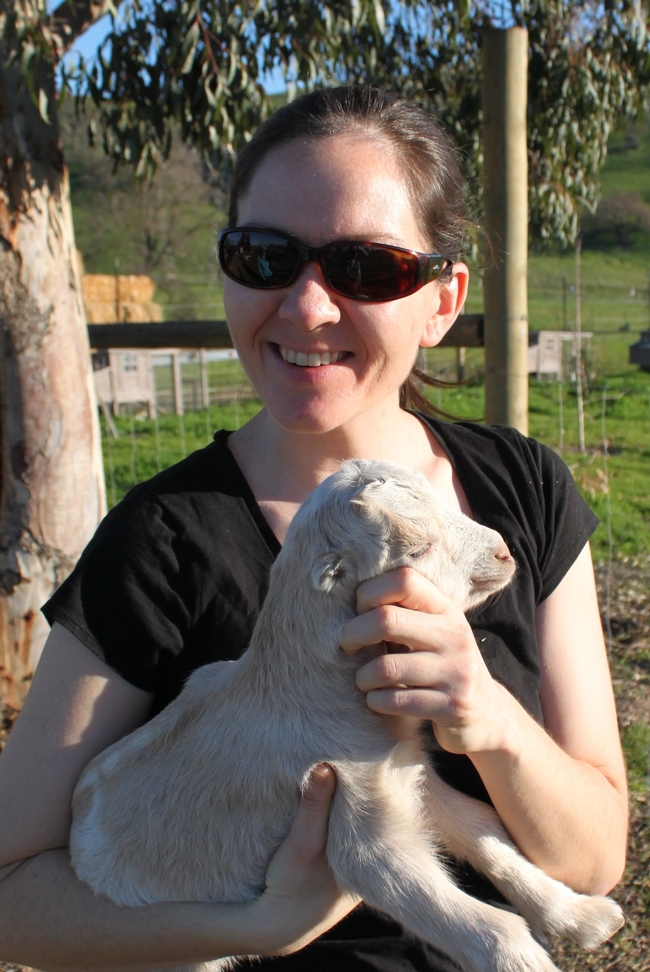
The UC Office of the President is providing $7,500 to each of UC's 10 campuses and to the Division of Agriculture and Natural Resources and the Lawrence Berkeley National Laboratory, earmarked to fund student awards in support of the UC Carbon Neutrality Initiative and other UC-based sustainability efforts.
An initiative to enhance competitive and sustainable food systems is part of UC Agriculture and Natural Resources Strategic Vision 2025.

Allen-Diaz honored by range management professionals

The premier award is given annually to SRM members who have sustained accomplishments or contributions to rangeland management during the last ten years.
“Barbara has a record of outstanding research productivity that has affected the understanding and management of California rangelands and has had global impacts,” said Amy Ganguli, assistant professor of range science at New Mexico State University.
“Barbara is also a well-regarded educator who has mentored several graduate students and young professionals who are making significant contributions to rangeland and natural resource management,” said Ganguli, who, along with Fee Busby, Utah State University wildland resources professor, nominated her for the award.
This is not the first time Allen-Diaz has been recognized by her peers for her research on the effects of livestock grazing on natural resources, oak woodlands and ecosystems of the Sierra Nevada. The national society honored her with its Outstanding Achievement Award in 2001, and the following year the California chapter named her Range Manager of the Year.
In 2007, Allen-Diaz was among 2,000 scientists recognized for their work on the Intergovernmental Panel on Climate Change when the Nobel Peace Prize was awarded jointly to the IPCC and Vice President Al Gore. Allen-Diaz's contributions focused on the effects of climate change on rangeland species and landscapes. She has authored more than 170 research articles and presentations. She has been an active member of the Society for Range Management, serving on its board of directors and on various government panels.
Allen-Diaz, who has served as UC ANR's vice president since 2011, is also a tenured UC Berkeley faculty member in the College of Natural Resources and currently holds the prestigious Russell Rustici Chair in Rangeland Management. She has been with the University of California since 1986. She earned her bachelor's, master's and doctoral degrees at UC Berkeley.
Air pollution is ravaging what’s left of California’s native coastal sage scrubland
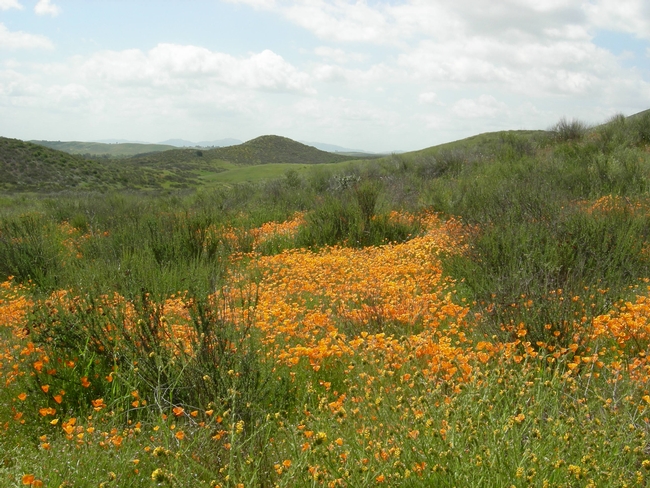
Because of its gentle topography and proximity to coastal cities, however, two-thirds of the coastal sage scrubland has already been converted to housing or farming, said Edith Allen, UC Cooperative Extension specialist in the Department of Botany and Plant Sciences at UC Riverside. The remaining coastal sage scrub is threatened by an invasion of exotic species and nitrogen deposition.
“Nitrogen deposition is caused by nitrogen oxide emissions from cars and industry. In addition, another plant fertilizer, ammonia, is emitted from agriculture and livestock operations,” Allen said. “The airborne emissions eventually settle on the soil surface, throwing the fragile coastal sage ecosystem out of balance, even 100 miles or more away from the emission sources.”
The combined deposition of nitrate and ammonia is up to 30 kilograms per hectare per year in the Los Angeles air basin. In contrast, in areas without the basin's air quality problems, about 2 kilograms are deposited per hectare each year.
“Growers fertilize small grain fields with 30 kilograms per hectare, so this represents a substantial nitrogen input,” Allen said.
Further compromising the coastal sage scrubland, grass species from the Mediterranean have been accidentally introduced into the ecosystem by activities associated with a booming agriculture industry, population growth, grazing and road building. The high nitrogen favors these exotic annual grasses.
“We've made a bad problem worse,” Allen said. “The exotic grasses are able to take up nitrogen at a faster rate, grow faster than native plants and displace them.”
In recent years, Allen worked with graduate students Robert Cox and Kristine Preston to understand vegetation-type conversion rate and recovery in coastal sage scrublands in western Riverside County. They compared information gathered by the Forest Service 85 years ago with 2002 California Department of Fish and Wildlife maps updated to 2009 using Google Earth. The analysis included measures of climate, topography, vegetation, land use, nitrogen deposition and fire in 151 study sites.
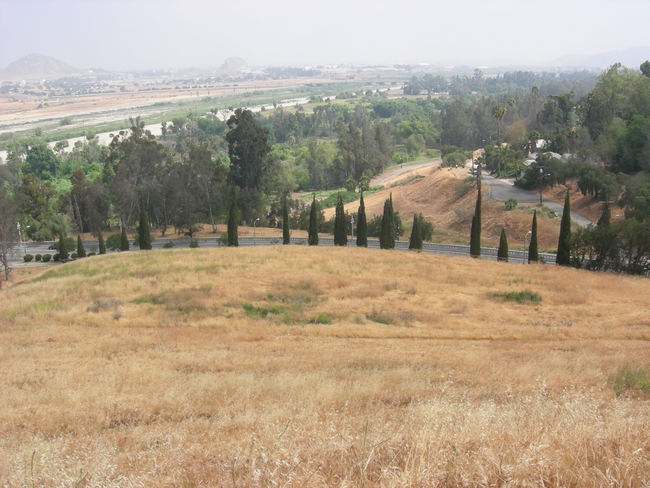
The analysis showed that 24 percent of the sites that were mapped as annual grassland in 1930 had recovered to coastal sage scrubland.
“In those parts of the county that did not receive much nitrogen, the native vegetation was able to recover,” Allen said. “Overall, the study shows that coastal sage scrubland conservation and restoration efforts are most likely to be successful on sites with low nitrogen deposition and low invasion of exotic grasses.”
For that reason, it only makes sense to try to restore coast sage scrub in areas where nitrogen deposition is low. For broader conservation, the best option is improving air quality.
This research determined that regions where nitrogen deposition is above the level of 11 kilograms per hectare per year will spontaneously convert to grassland.
“We have a value that can be used by regulatory agencies,” Allen said. “Right now, air pollution regulations aren't strong enough to protect the environment.”
Today, most passenger cars emit very low amounts of nitrogen oxides. The bigger problems in the Los Angeles Basin are diesel trucks and pollution generated in the ports of Los Angeles and Long Beach.
“Our population is growing. The volume in the ports is growing. As we come up with better, cleaner technologies, we're staying at the same pollution levels,” Allen said. “People need to realize that we will need lower nitrogen emission levels to protect our natural plant communities.”
The research was published last fall in the journal of Global Ecology and Conservation.
An initiative to maintain and enhance sustainable natural ecosystems security is part of the UC Division of Agriculture and Natural Resources Strategic Vision 2025.

